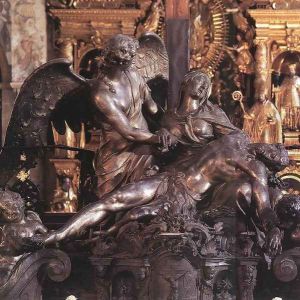Georg Raphael Donner Paintings
Georg Raphael Donner was an Austrian sculptor of significant renown in the Baroque period, celebrated for his pioneering work in lead sculpture. Born on May 24, 1693, in Essling, a suburb of Vienna, Donner was part of a family with a tradition in sculpture, which likely influenced his early inclination toward the arts.
He began his artistic education in Vienna and went on to perfect his skills in sculpture under the tutelage of Giovanni Giuliani, a prominent sculptor of the time. Donner's talent became evident early in his career, and he quickly gained recognition for his distinctive style, which often featured elegant, flowing lines and a sense of movement that was somewhat atypical for the Baroque era, hinting at the early onset of Rococo influences.
Throughout his career, Donner traveled and worked in various regions, including Salzburg and Bratislava, which was then part of the Kingdom of Hungary. His mobility allowed him to absorb different influences and to establish his reputation across a broad swath of Central Europe. In 1729, Donner received one of his most significant commissions: the creation of the fountain at the Neuer Markt in Vienna, also known as the Providentia Fountain or Donnerbrunnen. This work is considered to be one of his masterpieces, displaying his skill in creating dynamic compositions with multiple figures and his innovative use of lead as a sculptural material, which allowed for finer details and greater expression than the more commonly used bronze.
Donner's work was characterized by its naturalism and an understated elegance that moved away from the more dramatic and emotional expressions of the high Baroque. He focused on achieving a balanced composition and was known for his ability to capture the subtleties of human anatomy and the textures of drapery.
Georg Raphael Donner died on February 15, 1741, in Vienna, leaving behind a legacy that would influence generations of sculptors in Austria and beyond. His works remain an integral part of the Baroque heritage of Austria, and his contributions to the development of sculpture, particularly his work with lead, continue to be celebrated for their innovation and enduring beauty.




